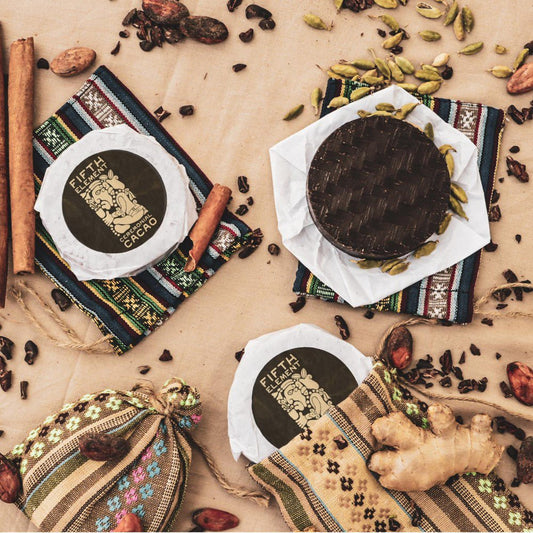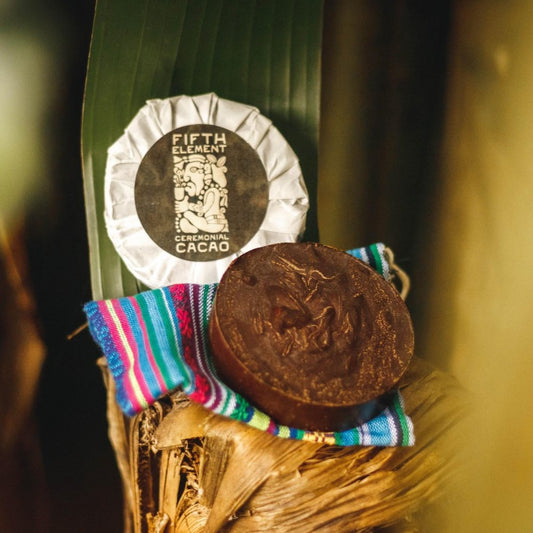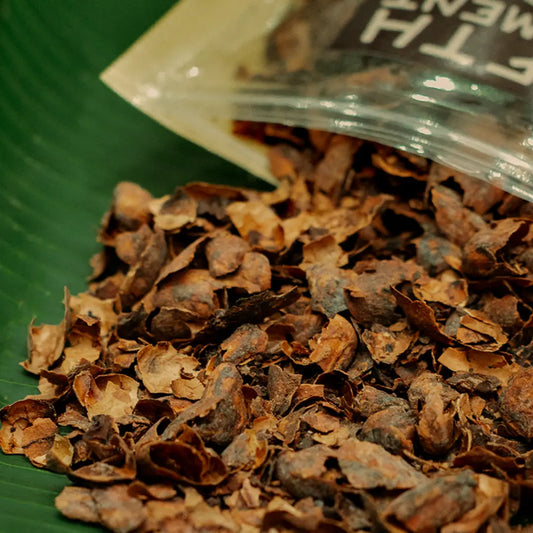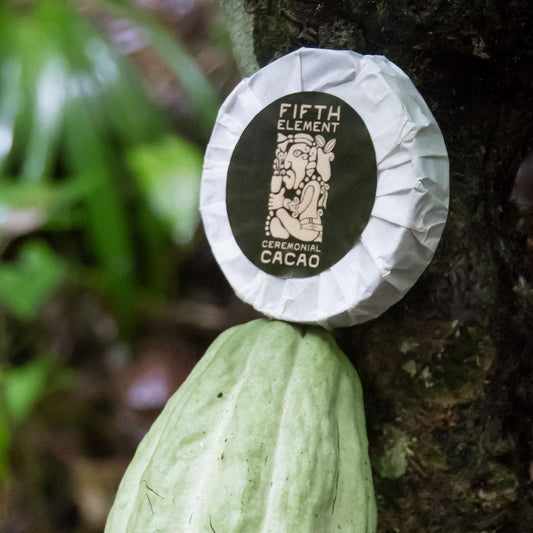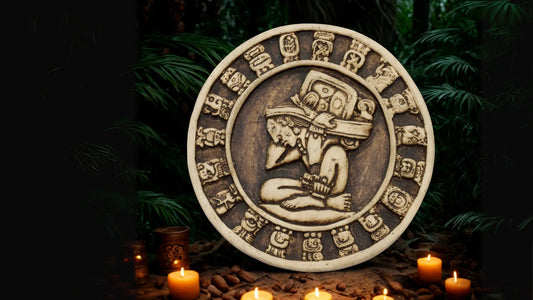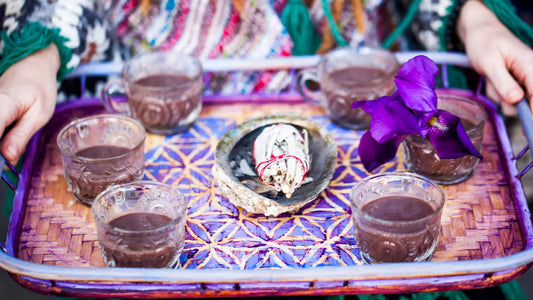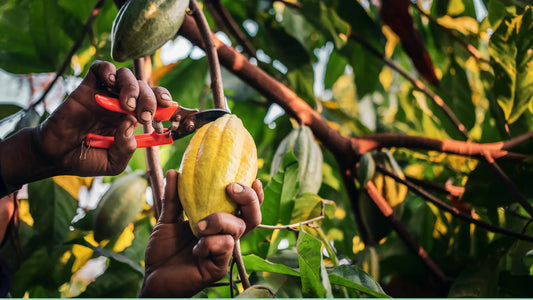Among the many ingredients and beverages known for their healing properties, ceremonial cacao is one of the most popular. For centuries, indigenous tribes in Central and South America have used this special cacao for their spiritual and ceremonial practices. In recent years, it has also gained popularity in the Western world as more and more people discover the benefits of using it in meditation and other spiritual practices or simply as a healthy superfood.
In this guide, we will explore the history and significance of ceremonial cacao, highlight its benefits for physical and mental health, and provide instructions for conducting your own cacao ceremony.
The History and Significance of Ceremonial Cacao
The history of ceremonial cacao goes back thousands of years and is closely linked to the Mayan and Aztec cultures of Central America. For these people, cacao was an important ingredient in their culinary traditions and also in their religious rites.
The Aztecs called cacao "xocolatl," meaning "bitter water," and believed it was a divine gift. They used it in ceremonies such as the sacrifice of war prisoners and at weddings. Cacao was also used as currency to exchange goods.
The Maya also valued cacao and called it "ka'kaw". To this day, cacao is a connection to the story of creation, the elements and the gods. Cacao is used in religious ceremonies and as a medical remedy.
When Europeans arrived in the New World, they discovered cacao and brought it to Europe. At first it was used as a medicine, but it wasn't long before it became a popular ingredient in sweets and drinks. Europeans added sugar and milk to soften the bitter taste of cacao.
However, the tradition of ceremonial cacao fell into oblivion and was replaced by the industrial production of chocolate and other sweets. In recent times, more people have started to take an interest in the traditional use of cacao.
In recent years, there has been a resurgence of interest in ceremonial cacao, particularly in the Western world. The ceremonies are often led by shamans or spiritual teachers and often involve drinking cacao in a meditative setting. Participants can experience a deep connection to nature and themselves, and often the ceremony is accompanied by music and dance.
The use of cacao in the ceremony also has an ecological component, as it can help emphasize the importance of protecting the environment and biodiversity. Many traditional communities that grow cacao operate sustainably and have a deep understanding of the importance of preserving their natural resources.
Overall, the history of ceremonial cacao has shown that cacao is far more than just an ingredient in candy. It has deep spiritual, health and cultural significance that reminds us how closely connected we are to nature and other people.
What makes Ceremonial Cacao so special?
Unlike regular cacao, which is often mixed with sugar and other ingredients and made into chocolate or other sweets, ceremonial cacao is used in its pure form. It is traditionally prepared by hand, organically grown and contains no artificial additives.
Ceremonial cacao is also known for its healing properties. It contains many nutrients and antioxidants and can help detoxify the body and strengthen the immune system. Some people also report increased creativity, improved focus and deep relaxation after consuming ceremonial cacao. If you would like to learn more about the healing effects of ceremonial cacao click here .
A guide for your own small ceremony
1. Before the Cacao Ceremony
Before you begin the cacao ceremony, take time to prepare for the experience. Find a quiet and comfortable place where you will not be disturbed. You can light a candle to create a pleasant atmosphere and have a blanket or cushion ready to sit comfortably.
Next, you'll need ceremonial cacao. It's important to choose a high-quality blend from a trusted supplier. Make sure the cacao is raw and free of additives.
2. Preparation of the Ceremonial Cacao
To prepare the cacao, heat about a cup of water on the stove or in the microwave ot the water heater. The water should not boil. Now mix 18 - 25 grams with about 4 - 5 tablespoons of water and stir until it is completely dissolved. Fill the cup with the remaining water. If you want, you can add spices to the cacao yourself, or try our ceremonial cacao with cinnamon, ginger or cardamom
3. The Cacao Ceremony
Sit up straight and hold the cup of cacao in both hands. Close your eyes and breathe in and out deeply to relax. Imagine how the cacao warms you from the inside and spreads throughout your body.
Next, you can set an intention for the ceremony. For example, you can focus on releasing blockages in your body or deepening your connection to nature. Focus on your intention and let the cacao guide your thoughts and feelings.
Now you can drink the cacao slowly and mindfully. Take small sips and let the taste melt on your tongue. Focus on the feeling in your mouth and only swallow when you are ready.
While you drink the cacao, you can focus on your breathing or meditate. You can also listen to music or a guided meditation to deepen the experience.
4. End of the Cacao Ceremony
After you have enjoyed the cacao, you should take a few minutes to sit in silence and feel its effects. You may feel a gentle energy flowing through your body or an inner peace and calm spreading through you. Allow these experiences to happen and be mindful of the thoughts and emotions that arise within you.
If you'd like, you can perform some sort of ritual after the ceremony to integrate your experience. This could be a simple act like saying gratitude or lighting a candle to reinforce your intention. Or you could be a little more creative and create a drawing or poem to express your experience.
It is also important to pay attention to your body and your needs after the ceremony. You may need a time of rest and relaxation, or you may feel energized and ready to do something. Listen to your body and act accordingly.


